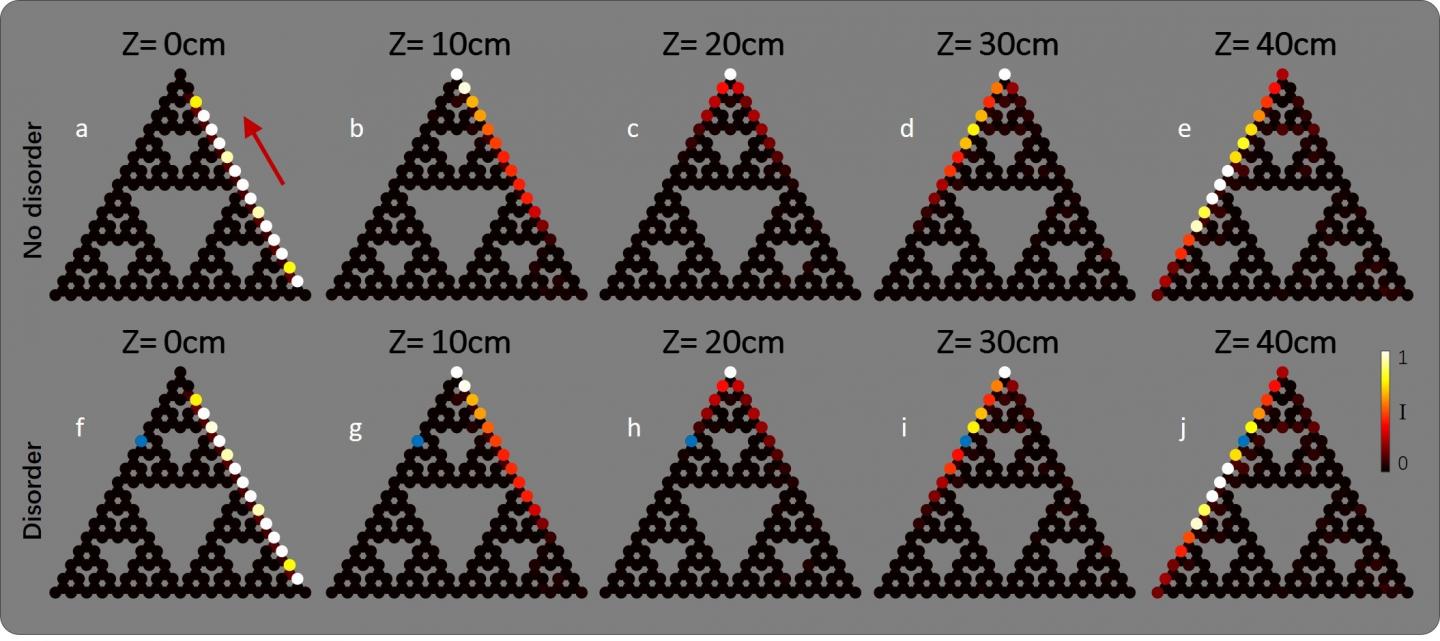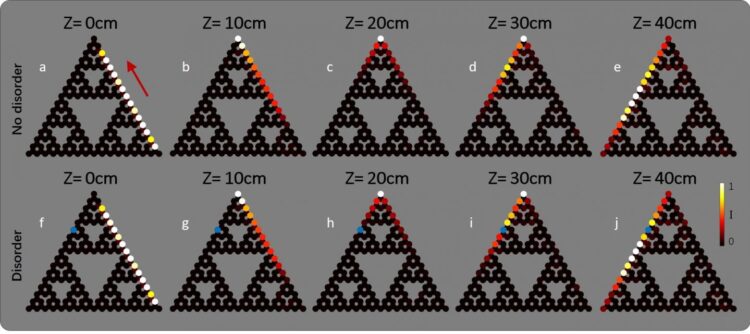
Credit: by Zhaoju Yang, Eran Lustig, Yaakov Lumer and Mordechai Segev
Topological insulators are a new phase of matter featured by their insulating bulk and perfectly conducting edges. They have been at the forefront of condensed matter physics for the past decade and more recently inspired the emergence of topological phases in many classical-wave systems, such as photonics and acoustics. Up to date, all studies of topological insulators have explored systems in integer dimensions (physically, 2D or 3D) with a well-defined bulk and edges. However, the physical dimensions do not always define the dimensions in which a system evolves: some structures have a noninteger (fractal) dimension, despite being in a 2D or 3D realm.
In a new paper published in Light Science & Application, a team of scientists, led by Professor Mordechai Segev from Physics Department and Solid State Institute, Technion-Israel Institute of Technology, Israel, and co-workers have developed the photonic Floquet topological insulator in a periodically driven fractal lattice. This lattice relies on a fractal photonic crystal [the Sierpinski gasket (SG)] consisting of evanescently coupled helical waveguides, which can be realized by femtosecond-laser-writing technology. They calculate the topological Floquet spectrum and show the existence of topological edge states corresponding to real-space Chern number 1. The simulations of the edge states show that wavepackets made up of topological edge states can propagate along the outer and inner edges without penetration into the ‘bulk’ and without backscattering even in the presence of disorder and sharp corners.
“Our results suggest a wealth of new kinds of topological systems and new applications, such as using topological robustness combined with the enhanced sensitivity of fractal systems for sensing and, in non-Hermitian settings, topological insulator lasers in fractal dimensions.” the scientists forecast.
###
Media Contact
Mordechai Segev
[email protected]
Related Journal Article
http://dx.





